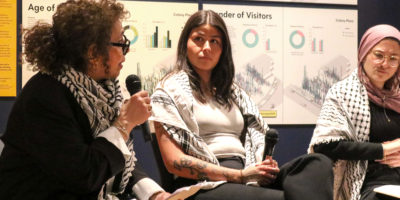By Theresa Ebden
The Best Foreign Film from the 1971 Academy Awards, detailing Mussolini’s Fascist regime in World War II, has been revamped with new technology. Now playing at the Carleton cinema, The Gardens of the Fizni-Continis examines intimate details of the vitctim’s lives.
Class division among the Italian-Jewish community determines the different families’ responses to the dictatorship. Internationally respected director Vittorio DeSica’s visual masterpiece was handed to technologists in Rome, while audio crews in New York created a Dolby Stereo mix. Now the Italian dialogue rolls crisply from the actor’s tongues into the theatre air.
The film centres in the private gardens of the wealthy Jewish Finzi-Continis family, where their children, the invalid Alberto and the beautiful Micol, spend their afternoons entertaining many friends, both Jewish and Christian. We watch them grow older, frolic in the rain in white t-shirts and grow dizzy with languid afternoons of tennis matches and tempestuous love games.
But when Mussolini starts denying Jews have a right to education, servants and public recognition, we see their way of life threatened by the new authority. The entire town becomes unsafe for the Jewish friends, who are suddenly considered third-class citizens.
The Finzi-Continis hide behind their garden walls, denying the peril and trying to accept Mussolini’s decision. Giorgio’s middle-class family cannot hide and is forced to make adjustments. Friend but brashly fascist Malnate is torn between two worlds of love and hate.
Slowly, the social circle is divided and the friends are left to deal with their new lives separately.
DeSica, in neo-realistic fashion, chose only five professional actors and used residents from the Italian town of Ferrara for small parts. The film made all five of the actors famous. Perhaps the most well-known in North America was Dominique Sanda (Micol), who later graced magazines from Vogue to Playboy.
The film won 28 awards, despite first being dismissed as a “small, ethnic film” in the ‘70s. While it focuses on a small group of individuals involved in ethnic differences, we realize they are only five people out of six million who suffered in the wake of a senseless reign.











Leave a Reply